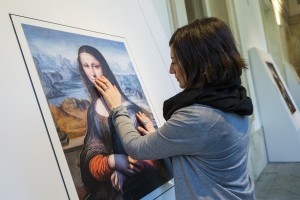“Art washes away from the soul the dust of everyday life.”
– Pablo Picasso
Art. What is art? According to the dictionary, art is the “expression or application of human creative skill and imagination, typically in a visual form such as painting or sculpture, producing works to be appreciated primarily for their beauty or emotional power.” Though the dictionary may provide one definition, the meaning of art has more than one explanation; it is often different for every individual. What does the word art mean to you?
For me, art is the act of transfiguring one’s emotions into a physical or musical form. It acts as an escape for me. While viewing a painting, I am able to run far, far away without ever actually leaving. I often get lost in a state of reverie, pondering the history of the piece and the feelings of the artist while painting it. I appreciate the artist’s technique and medium, and I view every brushstroke as though they’re words in untold stories.
When I’m creating art, something magical happens. With each brushstroke on canvas, I am able to distract my mind from life’s stressors. It’s as though each glob of paint represents a miniature state of euphoria for me. This ability to “escape” has helped me through the hardest of times.
One of my favorite pastimes is visiting our local art museum. Even after viewing a piece a hundred times, each time experience a tidal wave of emotions. This is what art is to me.
If you haven’t gathered yet, I have a deep appreciation for art. I think it is important for humans to express themselves and art is a means of doing so. Recently, however, I began pondering how someone with a visual impairment may get to enjoy art. After all, many of these individuals rely on their sense of touch to experience their surroundings, and the number one unspoken rule in an art museum is: “Do not touch.” These individuals may get an idea of an art piece from descriptions read in Braille or heard from a recording, but that doesn’t necessarily grant them the full experience of art.
surroundings, and the number one unspoken rule in an art museum is: “Do not touch.” These individuals may get an idea of an art piece from descriptions read in Braille or heard from a recording, but that doesn’t necessarily grant them the full experience of art.
Museum guards are strategically placed throughout museums to ensure harmful oils on visitors’ hands won’t corrode the artwork. However, touching is encouraged at the current exhibition at the Museo del Prado in Madrid. This
exhibit features works from masters such as Leonardo Da Vinci, Francisco Goya, and El Greco. In this exhibit, visitors will find six three-dimensional pieces from different genres. The tactile features were created using a technique called “Didu“, which adds volume and texture to the works. The pieces are accompanied by text written in Braille. The museum’s sighted visitors can experience the exhibit with darkened glasses and an accompanying audio guide.
“Developed in collaboration with professionals in the sector of visual impairment,” reads the exhibition’s text, “this project allows for the reality of the painting to be perceived in order to mentally recreate it as a whole and thus provide an emotional perception of the work. Non-sighted visitors will be able to obtain a heightened degree of artistic-aesthetic-creative enjoyment in order to explain, discuss and analyze these works in the Prado.”
According to a description from the Bilbao Fine Arts Museum, here’s how the new technique is done:
This remarkable new technique, developed by the graphic arts organization Estudios Durero in Bilbao, endows flat images with textures and relief contours up to five millimeters thick. A photograph of the image in
high resolution is given the most suitable textures and volumes as a guide for a blind person’s hand. Small, apparently insignificant details may suddenly become vital for an understanding of the composition or theme of a particular painting. It takes about forty hours working
on an image to define the right volumes and textures, which are then printed using a special ink. Next, in a process lasting around twelve hours, a chemical procedure is applied to give volume to features that in principle are flat. The real image with the original colours is then printed onto the contour in a “hand-friendly” size of 80 x 120 cm.In essence, what the process does is to give images a three-dimensional quality. The painting is reproduced in relief so the textures and volume of the reproductions can be explored by touch. At the same time, users listen to an audioguide in Basque, Spanish or English specifically developed to direct their “touch interpretation” of the painting. Finally, to give people with no visual problems an idea of the nature of this activity, masks are provided so anyone interested can experience the potential of touch.
This exhibit, and perhaps others like it, may revolutionize what art means to the visually impaired and even the sighted.
